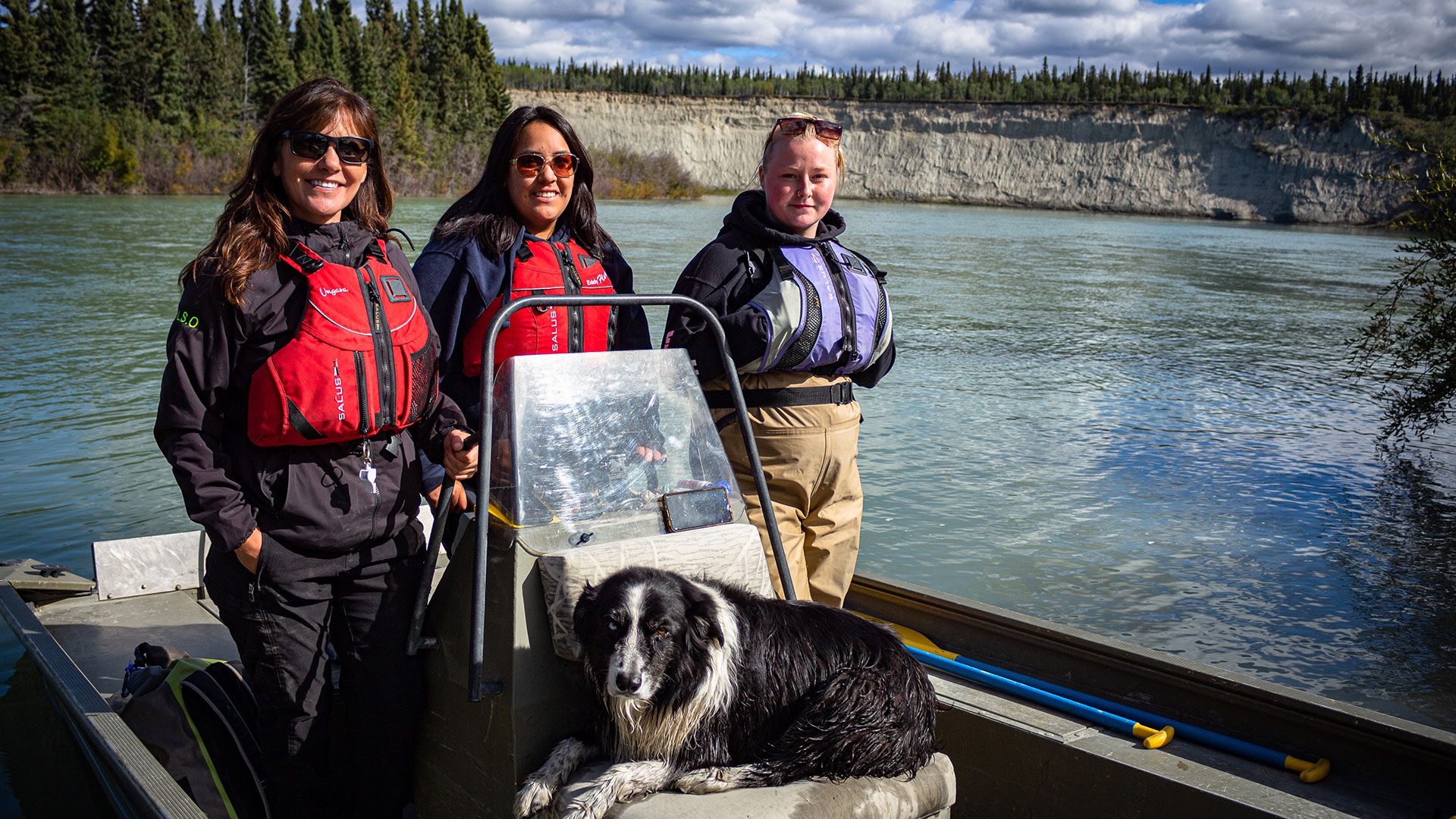It was only a few decades ago when hundreds of family fish camps could be spotted along the Yukon and Takhini Rivers.
During the later summer months into September, many families and communities would return to their fish camps and gather to net, dry and smoke fish in preparation for the winter months.
Fish camps hold a special significance for First Nations people in the territory. The camps were often the site of storytelling, cultural sharing and teachings passed down from elders to the younger generation.
But for most First Nations people in Yukon fish camps are a memory of the past.
“All of our fish camps are empty, there’s been nobody fishing for a number of years,” Brandy Mayes, a Kwanlin Dün First Nation citizen (KDFN) and lands operations manager, told APTN News.
“It’s not great for our cultural way of life, our ways of knowing, sitting with our elders and our teachings from fish camp.”
For the last decade, Chinook salmon, a fish that could once be commonly found at Yukon fish camps, have been in decline.
According to Fisheries and Oceans Canada (DFO), as of Aug. 21 just over 12,000 Chinook passed a sonar on the border of Alaska and Canada. That number is far below the 30,669 fish that were counted last year, and much less than the 10-year historical average of around 52,000 fish.
As the salmon must pass through Alaska to reach their spawning grounds in Yukon, they’re managed under a treaty with the United States to make sure enough fish cross the border. That spawning escapement goal is between 42,500 to 55,000 fish.
But with just over 12,000 fish, this year marks the fourth year in a row the spawning escapement goal won’t be met.
These days, most First Nations in Yukon ask citizens not to fish so stocks can rebuild, including KDFN.
Mayes says hardly anyone fishes for Chinook salmon, instead, other species of salmon are provided to citizens, often at a high cost, or flown in from down south.
She points out many young people have never tasted a Chinook caught from the river or experienced the joy of fish camp.
“That is something that has been who we are as people,” she said. “A lot of our youth don’t know that, or at least our traditional way of doing that.”
‘It’s disappointing’
With numbers declining, Mayes said KDFN is taking action to protect the highly valued fish.
“For us as land steward officers and running our own fisheries programs within our territory, it’s looking at a new way to connect with salmon, and what do the salmon need from us? They’ve given their lives to us for thousands of years and now it’s our turn to help the salmon return.”
For the last few years, the First Nation has been managing a sonar site and research camp five kilometres upstream of the confluence where the Yukon and Takhini rivers meet near Whitehorse.
Cheyenne Bradley, a KDFN citizen and land steward officer, stays at camp in shifts over the summer in order to monitor the sonar.
Using special software, Bradley is able to track Chinook salmon that swim past the sonar device in the river across from camp. The sonar works by emitting a beam of sound waves into the water. When the sound waves meet an object with a density different than water, sound waves bounce back as echoes.

The sonar’s transducer, which is a device that converts energy from what form to another, detects the echoes, and Bradley can track Chinook that have passed by the sonar using special software.
While the fish don’t appear as clear images, dark shadows can be detected by the software. Bradley notes Chinook are typically quicker than other fish to pass by the sonar and tend to cast a larger shadow.
However, she said the sonar isn’t exact, and officers monitoring the device use certain metrics such as size and speed to determine whether a fish is or isn’t a Chinook.
So far, 456 Chinook are estimated to have passed the Takhini sonar this season, an increase of over 200 fish from last year. The sonar is also the only one in Yukon reporting an increase this season.
Mayes isn’t sure why more fish have been counted this year and is hopeful at least 500 will be counted by the end of the season. However, she says this year’s increase is still well below average.
She said in 2017 around 1,800 Chinook were counted.
“It’s disappointing. We’d like to see the numbers be a lot higher,” she said.
Bradley said KDFN has also used programs like instream incubation in 2019 and 2020 to improve stocks.
The program works by taking milt from males and eggs from the females, fertilizing them and placing them into boxes or mesh bags in creek beds where females would typically lay their eggs.
But Bradley said the program hasn’t been successful, and KDFN currently relies on sonar programs and carcass surveys for monitoring.
“You get to see how may eggs the females laid and it can actually be quite heartbreaking when you do a carcass survey and you see the female with a belly full of eggs still. Thousands of eggs. She made it, but she didn’t get to spawn, which is quite sad,” she said.
Both women said salmon monitoring is important as it can help the DFO and First Nations with decision making concerning salmon conservation, such as asking citizens not to fish.
“I know it’s a really, really hard thing to ask, but we’re in dire times right now and we really need to let the salmon go and spawn,” Bradley said.
‘Salmon are resilient’
James MacDonald, chair of the Yukon Salmon Sub-Committee (YSSC), an advisory board under the Yukon First Nations final agreements, said this summer’s Chinook numbers are the lowest ever for the historical run abundance of record for the territory.
“People are starting to run the alarm that we’re in a crisis situation,” he said.
He said compounding the issue is the significant drop in the number of salmon that made it across the border from last year.
“That’s a biological tipping point,” he said. “We’ve lost 90 per cent of our (Chinook) salmon stocks and to me that’s a total natural disaster.”
MacDonald said it’s unclear why numbers decreasing, though a combination of factors like changes in fresh water temperature caused by climate change and increased predation are likely to blame.
He said YSSC is looking to partner with affected First Nations and the DFO to look at small-scale hatcheries in the territory as a possibility for Chinook salmon restoration.
While fish camps no longer dot the Takhini River, Mayes says it’s important First Nations stay positive they may one day return.
“I know some people are losing hope, it’s a small number of salmon that are coming back, but we have hope, we’re optimistic. Salmon are resilient.”









